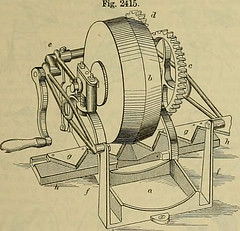With all the talk of global warming and going green it is a pertinent subject to discuss within the context of trade and production. While most of our pollution comes from industry and farming followed by transport it is important to note the shift towards a carbon credit system. This seems to me to be a sly way of turning previously worthless commodities into a tradeable item. It also allows those companies that are polluting to continue to do so by merely changing some of their investment strategies towards buying carbon credits.
[How will we switch to a green world?]If you think about this issue closely you will find that it would then be possible to convert all resources into carbon credits. National Parks for example would be invested in by the private sector to offset any pollution their company creates. It could also include unused land (sometimes fertile farming land) being used to grow permanent trees and therefore reducing the overall capacity of a nations farming output. Is this a wise strategy when we are experiencing a world shortage in food production? This comes at the same time as ethanol becomes mandatory in some fuel mixes. For those of you who do not know ethanol is mainly produced using either corn or sugar cane, reducing the percentage of these commodities available for consumption.
The green movement is misled if it thinks that global warming is its messiah in terms of changing the way the world works. It is only through ground roots change that true stabilization of our environment can be attained. This is still not taking into account the huge changes that occur naturally in the Earth’s continuing cycles. What about ice ages? I am not denying the huge impact of humans on their environment though I am also not denying the huge impact the environment has on humans.
While we advance more in terms of technology and understanding we are still vulnerable to our environments. Harsh winters still occur. Heat waves. Tsunamis. Hurricanes. The list goes on. Human society also develops in relation to its environment. It affects language, food, clothing, housing, farming, everything. It is why in places like Australia we are still learning to use this unique environment correctly. Other places have had thousands of years to develop their agriculture, while Australia was settled by Europeans with specific ways of farming that they brought with them. A European farm in a completely unrelated environment.
While our environment has managed so far to keep producing, it is showing some signs of hitting a breaking point. Some indicators so far have included: increased salinity, mass erosion, empty rivers, blue-green algae and of course chemical and other pollutant levels in city river systems. The solution can not be to stop all agriculture and industrial practice as that would be equivalent to a national suicide. Rather it is to use these industries to monitor and rectify the problems facing them. It is in a farmer’s interest to have a sustainable farm whether it is to produce crops or feed livestock, it must be “environmentally healthy” to sustain production. It is improving and repairing the environment that will increase production rather than hinder it.
Likewise with industrial production, as they will find the increased efficiency that comes with going green (rather than buying carbon credits) will save huge sums in production costs. I do not support industry as oppossed to the environment (quite the opposite actually) but I think there has to be a happy medium.
I would see the best solution as more localised production on a smaller scale to begin with in order to create a diverse production. This would also provide a buffer against market changes particularly in a diverse farm. This is because while some commodity prices might be down, another commodity produced by the farm may be higher in order to componsate for the loss. This localised production would see better prices for the community and also fresher produce being delivered. This also saves a massive amount on transport. These are all options for the modern era where it will probably come down to a “sink or swim” solution in places like Australia where our environment is already at breaking point.
If we continue with a carbon trading scheme it will become just like the stock market and subject to declines, losses and manipulation. This is using an old world solution in a modern era where the shape of the old markets are quickly blurring into something that could resemble more of what Adam Smith was talking about. Supply and demand. With local producers providing primarily for the local market.
I hope this has given you all food for thought. This article is also available on http://www.kjwriteleft.com/beta.

